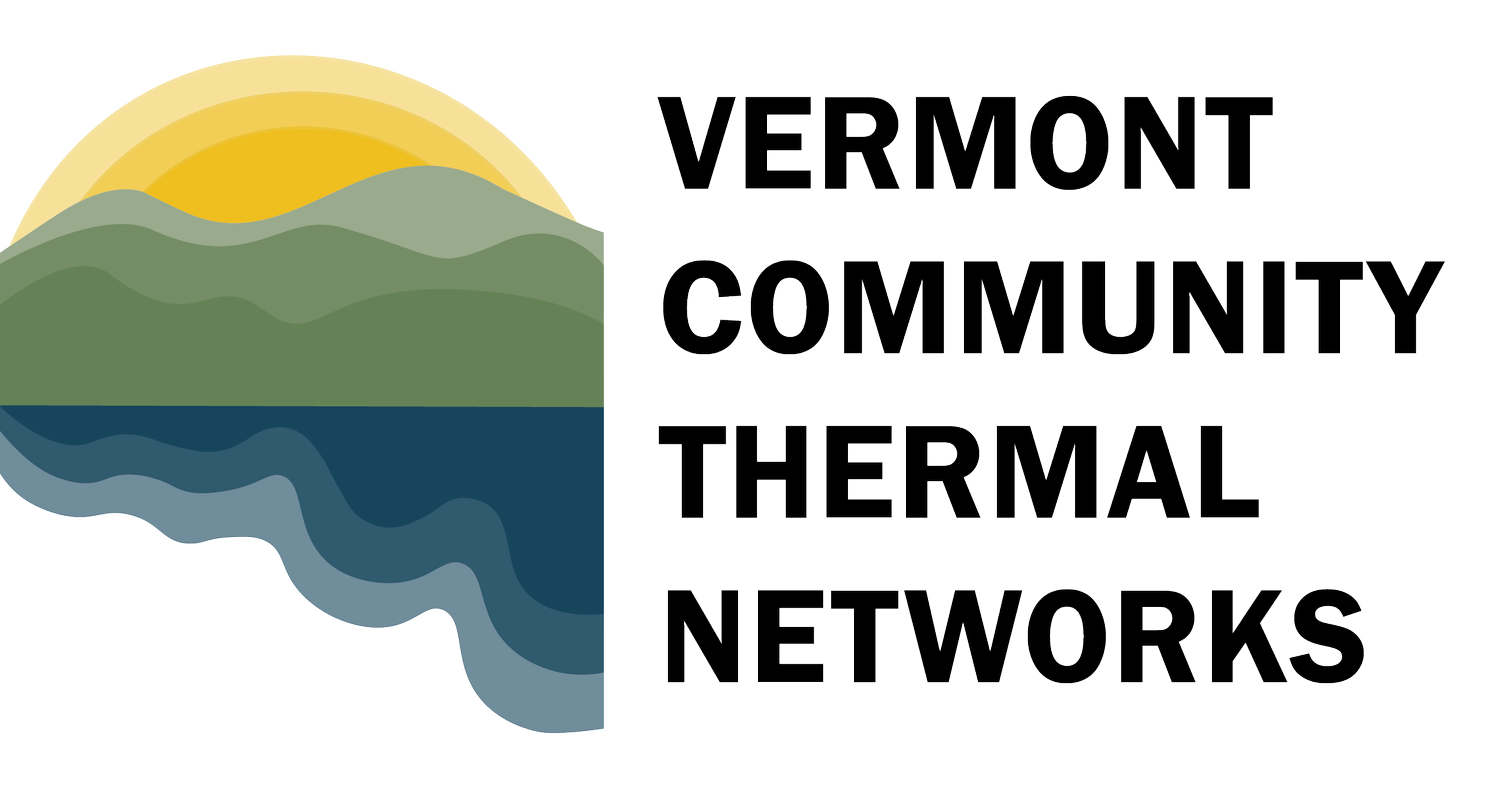How to Develop a
Thermal Energy Network
New toolkit demonstrates how communities can take neighborhood-scale decarbonization into their own hands
FOR IMMEDIATE RELEASE
Date: March 28, 2024
Press contact: Debbie New, debbie@vctn.org
New toolkit demonstrates how communities can take
neighborhood-scale decarbonization into their own hands
‘How to Develop A Thermal Energy Network’ is the first innovative, actionable guide
to support communities in taking ownership of their clean energy infrastructure.
MONTPELIER, VT – A team of Vermont energy experts and local leaders have developed a first-of-its-kind tool to help Vermont communities bring clean heating and cooling to their neighborhoods, making energy democracy a local reality and taking decarbonization into their own hands. How to Develop A Thermal Energy Network is a practical resource for municipalities and others seeking to implement thermal energy networks (TENs), which offer an equitable, economically advantageous, and locally-driven strategy for decarbonization.
Thermal energy networks are non-emitting, non-combusting systems that use underground pipes and ground or water-source heat pumps to capture and distribute thermal energy for heating, cooling, and hot water. TENs exchange waste heat from large buildings, refrigeration, industrial processes, or wastewater, and their design can also include shallow boreholes that use the ground to access and store thermal energy. As highly efficient community-scale systems, thermal energy networks make electrification efforts go further, faster.
"This resource is the first of its kind to accelerate neighborhood-scale decarbonization of our built environment,” said Jared Rodriguez, Principal of Emergent Urban Concepts, who advised on the toolkit and works across many states on resource-efficient decarbonization strategies. “Community leaders, organizations, building owners, and the business community are having difficulty navigating the overture of noise in sustainability and climate action. This toolkit's clear, actionable steps are needed to help community members cut through the confusion to identify and prioritize viable projects that reduce or eliminate energy consumption and fossil fuel use."
The toolkit empowers local stakeholders to become “TEN-ready.” Short, plain-language descriptions link to educational videos, fact sheets, suggested actions, and checklists to help organizers identify a project, evaluate priorities, and coordinate with planned infrastructure upgrades.
“Over a hundred Vermont town energy committees need a resource like this to educate and work with town leaders to decide if TENs can help them reach their climate and energy affordability goals,” shares Gretchen Schimelpfenig of the Huntington, Vermont Energy Committee.
Most TENs operating in the U.S. are under private ownership, with a few municipal systems and several emerging investor-owned utility pilots. Alternative ownership models can bring the benefits of local thermal energy to the public and may give Vermont communities greater decision-making power over their own systems. How to Develop A Thermal Energy Network reviews municipal, cooperative, and third-party ownership pathways, and describes how those choices can influence financing, cost recovery, and eligibility for Inflation Reduction Act incentives.
“This toolkit will be incredibly valuable for anyone interested in bringing thermal energy networks to their communities, particularly in Vermont, where most people rely on delivered fuels to heat their homes,” said Ania Camargo, Thermal Energy Networks Senior Manager at the Building Decarbonization Coalition.
How to Develop A Thermal Energy Network was created with contributions from Vermont energy committees and regional planners who are investigating how to bring TENs to their towns. Along with expertise from a range of Vermont energy leaders, this local input informed more specific, practical resources to help Vermonters access reliable, resilient heating and cooling through TENs.
Designed for anyone curious about thermal energy network development, the toolkit is particularly useful for municipal leaders, community or regional planners, business owners, developers, affordable housing organizations, and electric co-ops considering TENs in their communities or territories.
Access How to Develop A Thermal Energy Network online.
For more information, please contact Debbie New, Vermont Community Thermal Networks Coordinator at debbie@vctn.org.
Vermont Community Thermal Networks is a statewide umbrella for advancing locally-directed thermal energy networks in Vermont.
Energy Action Network’s Thermal Energy Networks Team is a group of local, regional, and state leaders building a coalition to accelerate the development of Thermal Energy Networks in Vermont.
Vermont Energy & Climate Action Network (VECAN) is a statewide network of town energy committees united to cut energy costs, foster renewable energy generation, and lessen the state’s contribution to global warming.

